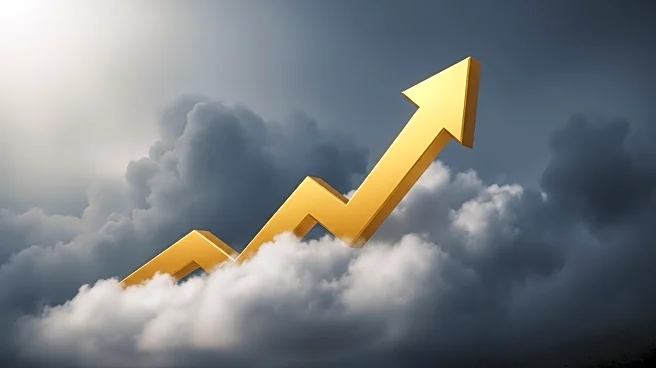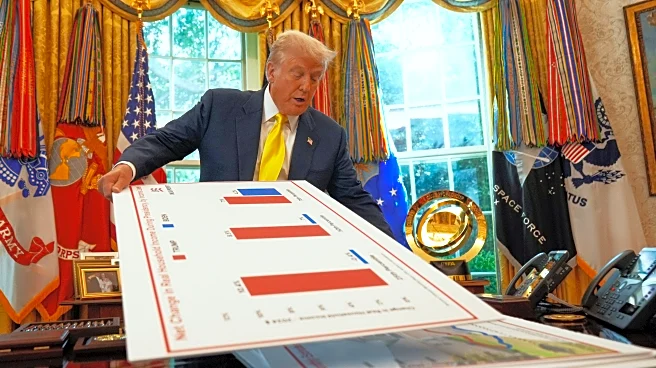What's Happening?
Recent analysis highlights the evolving relationship between gold and various cyclical markets, suggesting a potential shift in economic conditions. Gold, traditionally seen as a counter-cyclical asset, is showing signs of consolidation against major indices such as the S&P 500 and global stock markets. This consolidation follows a period of heightened market volatility earlier in the year. The Gold/CRB Commodity Index is maintaining a steady position along its 50-day moving average, indicating that gold may outperform cyclical commodities in the upcoming counter-cycle. Additionally, the Gold/WTI Crude Oil ratio is trending upwards, suggesting a possible interruption in the current economic cycle. The Gold/Copper ratio reflects market noise influenced by President Trump's tariff discussions, yet maintains an upward trend. The Gold/Silver Ratio has experienced a pullback, impacting related trades, while the Gold/Inflation Expectations ratio suggests inflation has not been a significant concern since 2023.
Why It's Important?
The analysis of gold ratios against cyclical markets is crucial for investors and policymakers as it provides insights into potential economic shifts. Gold's performance relative to stocks and commodities can signal changes in economic sentiment, particularly during periods of uncertainty. If gold continues to consolidate and outperform cyclical assets, it may indicate a move towards risk-off strategies, impacting investment decisions across sectors. The upward trend in the Gold/WTI Crude Oil ratio could affect energy markets and related industries, while the Gold/Copper ratio's stability amidst tariff discussions highlights the influence of political factors on market dynamics. Understanding these trends can help stakeholders anticipate changes in economic conditions and adjust strategies accordingly.
What's Next?
Investors and market analysts will closely monitor these gold ratios for further signs of economic transition. Should gold continue to consolidate and outperform cyclical assets, it may prompt a shift towards more conservative investment strategies. The potential interruption in the economic cycle suggested by the Gold/WTI Crude Oil ratio could lead to adjustments in energy market forecasts. Additionally, any changes in the Gold/Silver Ratio could impact currency markets, particularly if the US dollar is affected. Stakeholders will need to consider these developments in their planning and decision-making processes.
Beyond the Headlines
The implications of these gold ratios extend beyond immediate market trends, touching on broader economic and political factors. The stability of gold amidst tariff discussions underscores the complex interplay between political decisions and market reactions. As inflation expectations remain subdued, there may be concerns about deflationary pressures, which could influence monetary policy and economic growth strategies. These deeper dimensions highlight the importance of comprehensive analysis in understanding the full impact of market trends.













